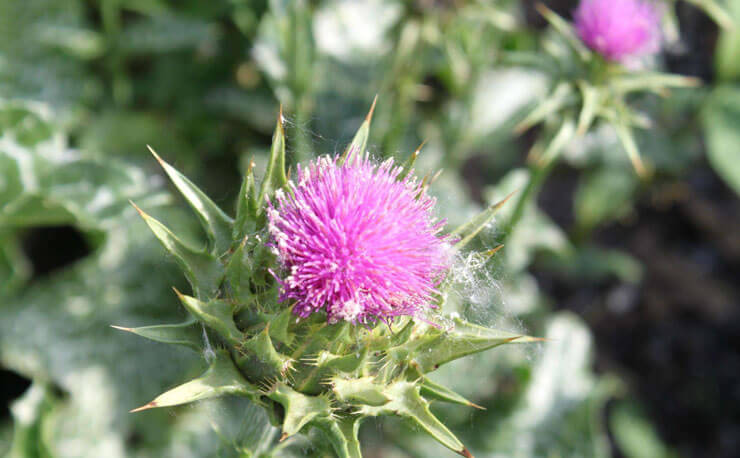Milk Thistle Extract powder is extracted from a plant called milk thistle. Milk thistle is native to Europe and was brought to North America by early colonists.
Milk thistle is most commonly used in liver diseases, including liver damage caused by chemicals, alcohol, and chemotherapy, as well as liver damage caused by poisoning with Amanita phalloides (death cap), jaundice, chronic inflammatory liver disease, liver cirrhosis, and chronic hepatitis.
Milk thistle extract is also used to reduce appetite, heartburn (dyspepsia), gallbladder, enlarged prostate (benign prostatic hyperplasia), a blood disorder called beta-thalassemia, and infertility.
At the same time, the milk thistle extract is also used for diabetes, kidney damage caused by diabetes, hangovers, spleen diseases, prostate cancer, pneumonia and chest inflammation, malaria, depression, uterine complaints, increased flow of breast milk, allergies Symptoms, the onset of the menstrual cycle, obsessive-compulsive disorder (OCD), Alzheimer’s disease, Parkinson’s disease, multiple sclerosis, high cholesterol and symptoms of menopause.
Functions and Benefits of Milk Thistle Extract With Silibinin And Silymarin
- A natural extract of milk thistle can protect the liver.
- Milk thistle extract powder can reproduce liver cells.
- Natural extract of milk thistle can be low in fat in the blood.
- Extract of milk thistle has the properties of radiation resistance.
- Milk thistle extract is used to combat age.
- Natural extract powder of milk thistle has effects of resistance to cardiovascular diseases.
Application of Milk Thistle Extract
- In the pharmaceutical field, as a raw material, the powder of the thistle extract is used mainly for the protection of the liver.
- In the field of health products as raw material, the extract of thistle marianum is mainly used to support the liver.
- Extract of milk thistle can be used as a food additive.
- Extract of milk thistle marianum can be used as animal feed.
Milk thistle is a one-year or two-year-old tall plant (about 1.5 m) with mottled decorative leaves. The radical leaves of milk thistle are very large (50 cm or more in length, about 30 cm wide), oblong-oval, wavy, with a concave edge and long spines (planting a thorny thistle along the fence, get a double impassable hedge). The surface of the thistle leaves is dark green, glossy, and covered with a pattern of white-pearly spots. Milk thistle adorns the garden with its elegant leaves all season, and from mid-summer to late autumn the plant also constantly blooms.
Tubular flowers (raspberry or purple) collected in round baskets up to 6 cm in diameter, crown ends of shoots of milk thistle. In each basket, many large seeds are formed. The milk thistle is a black-yellow seed with a “tuft” of hairs on the end.
Milk thistle extract is not affected by pests and diseases.
In many nations of the world, milk thistle is revered as the most powerful medicinal plant, a gift to people from the holy Virgin Mary. According to legend, Maria indicated to people the medicinal properties of milk thistle, and the white spots on the leaves symbolize her milk.
Historical documents indicate that the ancient Greeks used a decoction of milk thistle fruit 2000 years ago.
It is believed that the Romans knew about its beneficial properties and used it in the treatment of liver diseases. In India, it is used in homeopathic and folk medicine. In Europe, extract of milk thistle has long been recommended for such hepatic disorders as hepatitis and cirrhosis. In the ancient medical reference book, the Greek herbalist Dioscorides recommended a milky thistle for many diseases.
Another written mention of the milk thistle is found in the works of the abbess of the women’s monastery in Bingen-Hildergardy, who lived in West Germany from 1098 to 1179. The Prioress kept a diary in which the medical knowledge of that time was summarized. In all Russian reference books on medicinal plants, there is a mention of the thistle, which is mentioned in very many diseases.
Milk thistle has been widely used as a remedy for many diseases. In the last century, the biochemical composition of milk thistle was determined at the Munich Institute of Pharmacy. It turned out that it contains a rare biologically active substance silymarin and many other medicinal components (a total of about 200 valuable components).








